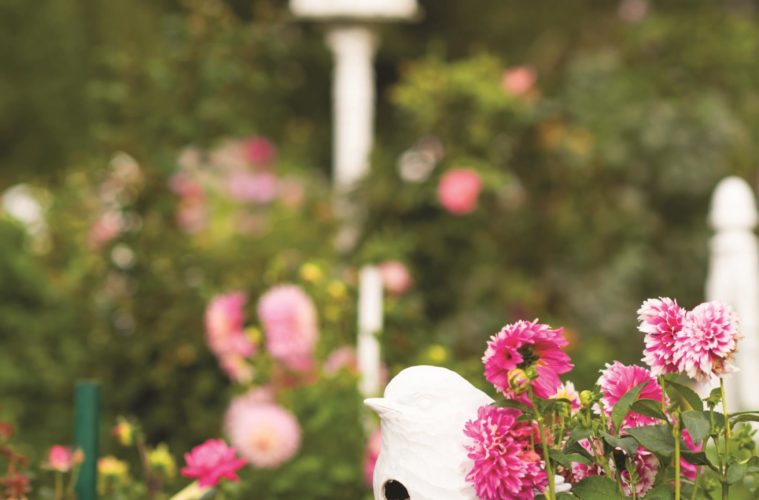Local artist Robin Sears invites us into her classic garden.
Nestled in Hamilton’s historic district is a fanciful cottage that features a New England garden of yesteryear with a modern Lilly Pulitzer-esque kick. Boldly painted Benjamin Moore’s “Yellow Lotus,” the 18th-century antique structure has an azalea-pink front door and a chartreuse back door. The property is encircled by a white picket fence, each post adorned with a white ceramic woodland animal—a feature beloved by neighborhood children for years. Within lies the front garden, bursting with color even in late summer, when most others are spent. And it is no “secret garden,” but a gift for the admiring eyes of locals and day-trippers alike.
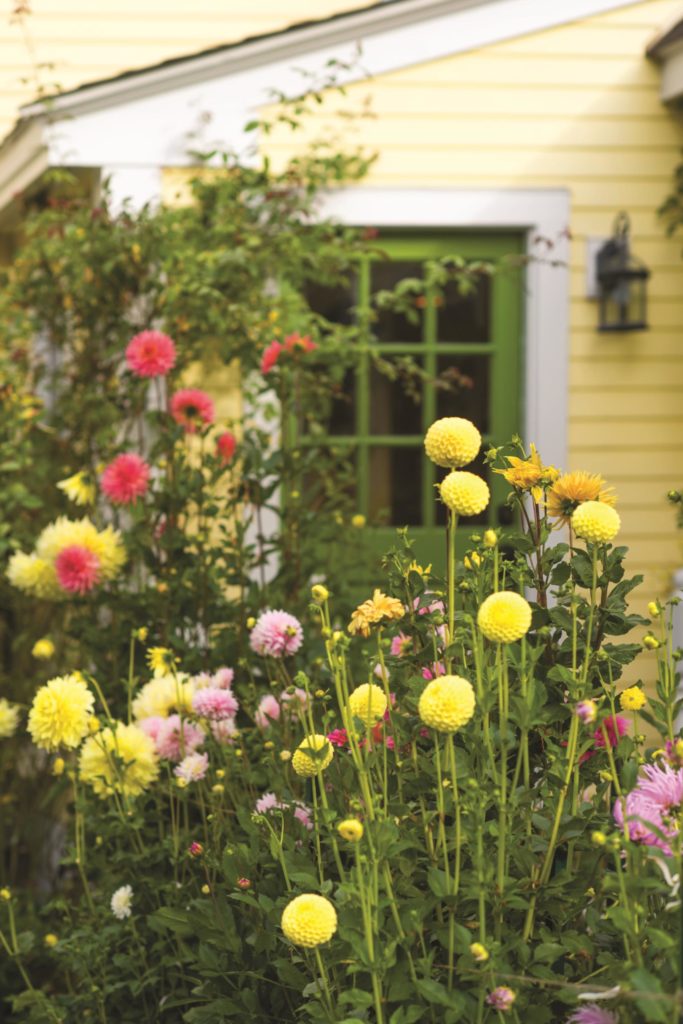
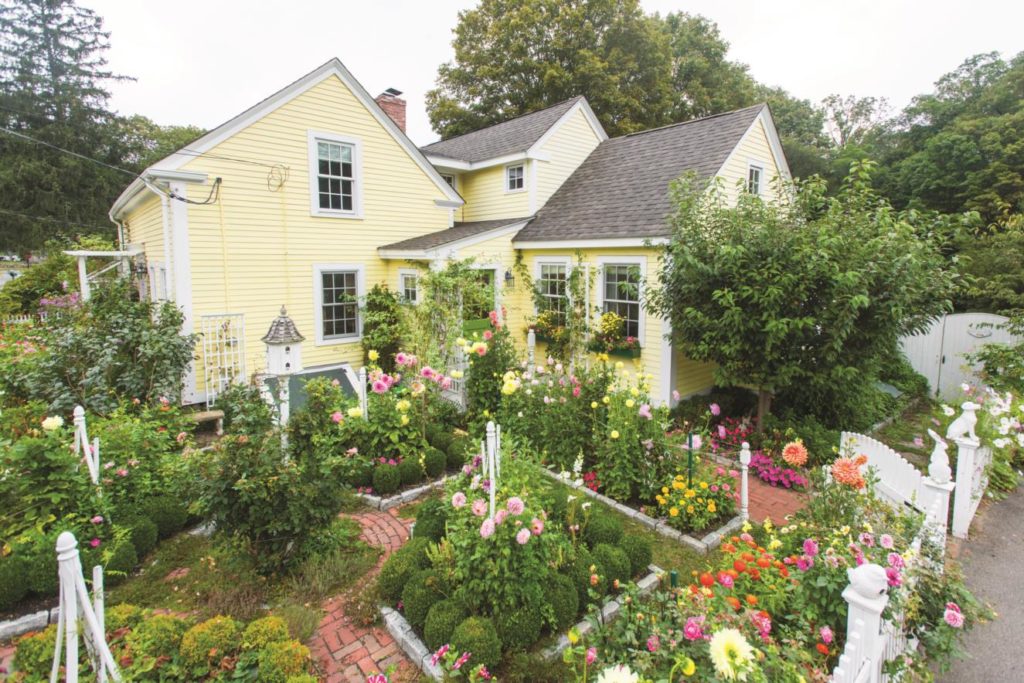
Robin Sears is the maestro of this petite landscape, and her artistic background has influenced its evolution. She grew up in a “chaotically creative family” in New York City. After college she worked in retail during the 1990s for clothiers such as Macy’s, J. Peterman, Talbots, and a young Tommy Hilfiger. Later, she jumped into her real passion: art and design. She was given creative leeway as director of product development and design for the former Essex Collection, a much-adored Cape Ann ceramics company.
Once she was married and living on the North Shore, her interest in gardening took off after visits to Canaan Farms (now Tendercrop Farm) in Wenham. The former owner, Marilyn Donati, sold Sears her first dahlias: ‘Otto’s Thrill’ and ‘Kelvin Floodlight.’ She admits, “I was hooked.”
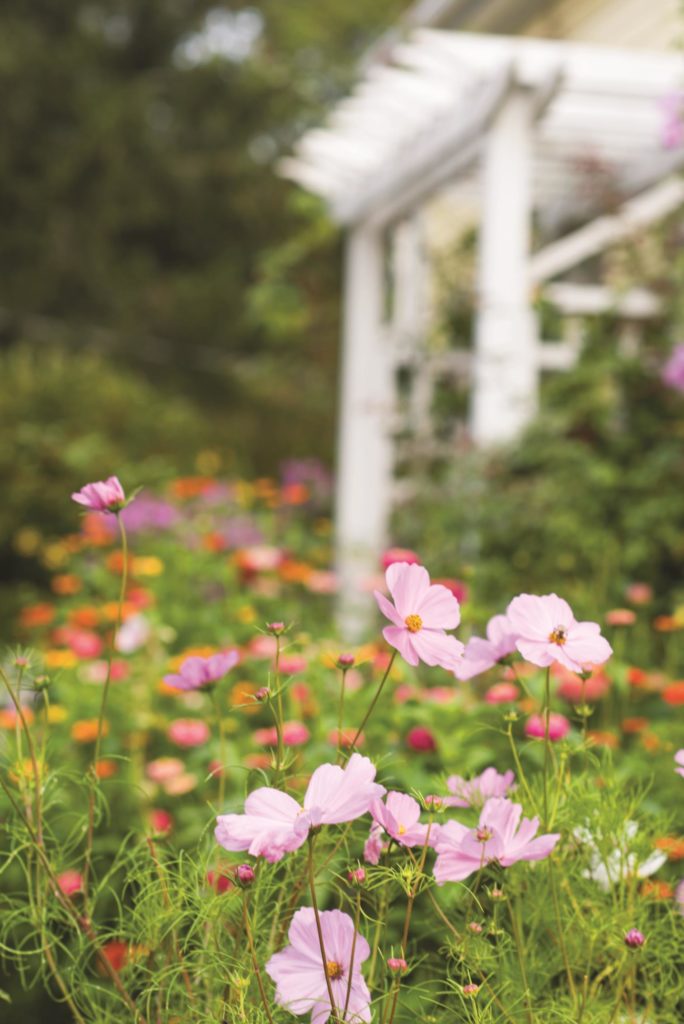
Sears’s penchant for bold color and an abundance of plant materials befits the cottage garden style. Bathed in southern light, her garden peaks twice, in June and September. The spring show consists of perennials in delicate purples, blues, and yellows: irises, verbena, delphiniums, digitalis, narcissi, peonies, and roses. A ‘Donald Wyman’ crab apple tree anchors one corner of the yard, while in another, a miniature Japanese maple fans out like a crimson ball gown.
This friendly patch of colors and textures has a feeling of delightful chaos, but don’t be fooled. “My small front garden has a rigid symmetry to it—believe it or not. And it has strong bones: brick paths, cobblestones, and granite edging. It is balanced and geometric. I put a lot of thought into that,” says Sears.
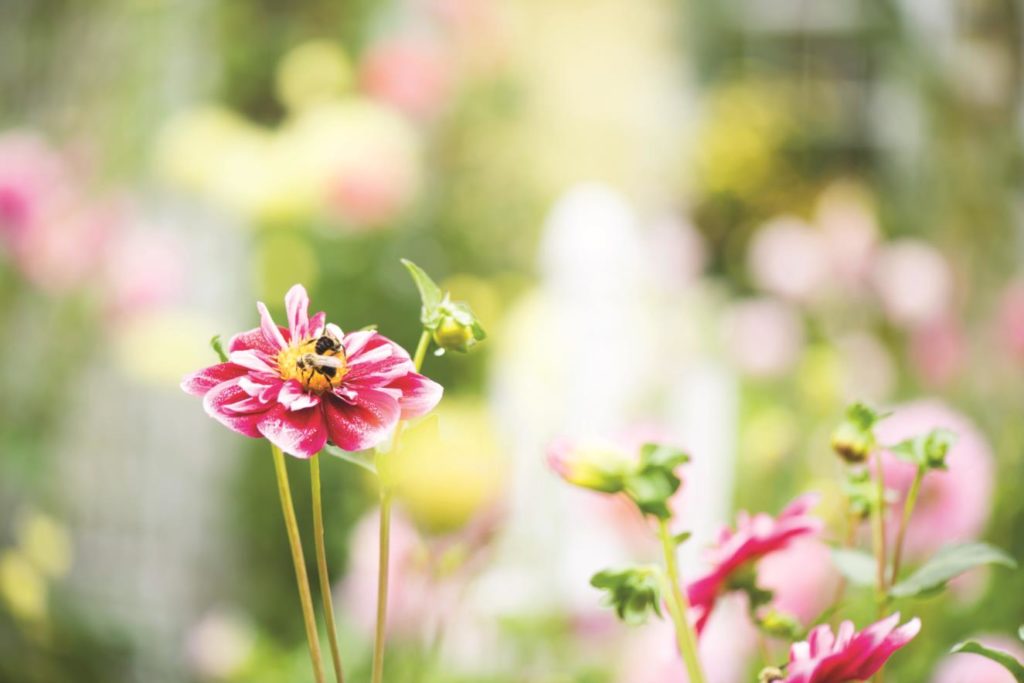
The Colonial Williamsburg–inspired parterre garden once housed vegetables, but is now dominated by lettuce and herbs in the spring and dahlias, zinnias, and roses in the summer. Crop rotation is practiced to keep the flow of nitrogen active and also to let Sears experiment with different plant schemes. Each symmetrical bed is framed with small boxwood balls and has a white pyramid trellis. A tall white birdhouse stands in the center.
By late August, the second great awakening occurs. The garden becomes a clever riot of mostly annuals: dahlias, zinnias, and cosmos. Phlox and roses are also in the mix. The colors vary according to Sears’s whim. “I can change the color scheme due to the fact that I can move the dahlias each year.”
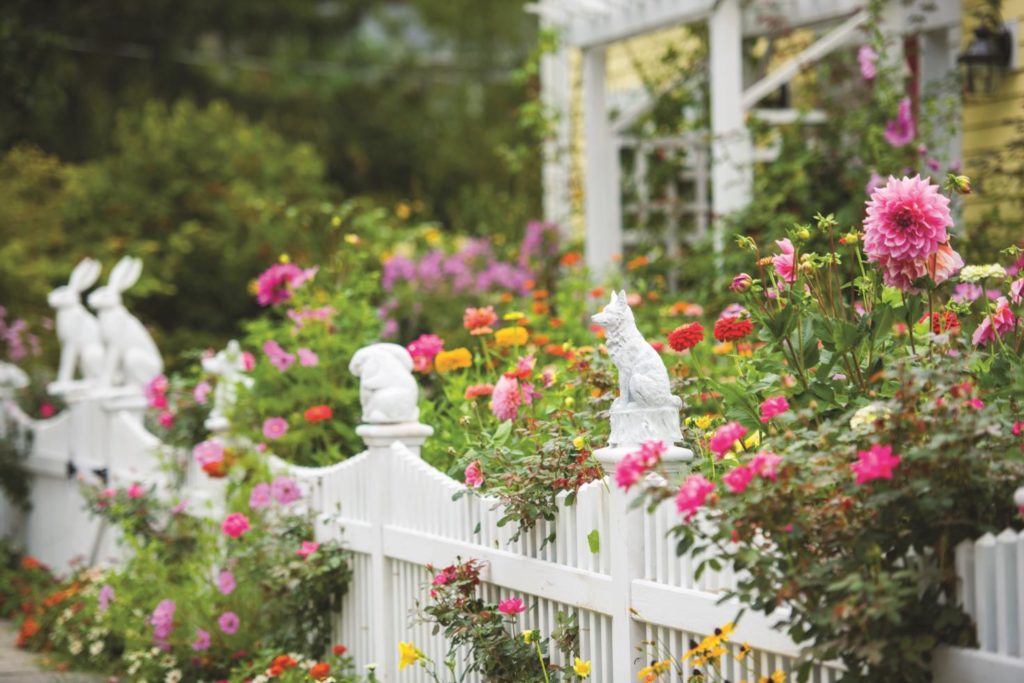
Dahlias certainly are the star of the show. They fulfill Sears’ need for rich hues and different textures. “I love the lack of restraint in a dahlia. Crazy big, silly, and fun. I want to keep the color going as long as possible.” At last count, she had 43 varieties in her landscape, including ‘Gerry Hoeck,’ ‘Lotus Flower,’ and her favorite, ‘Maki.’ They shoot up like lemon-yellow, coral, and tangerine soldiers, intertwined with angelic pink and white cosmos.
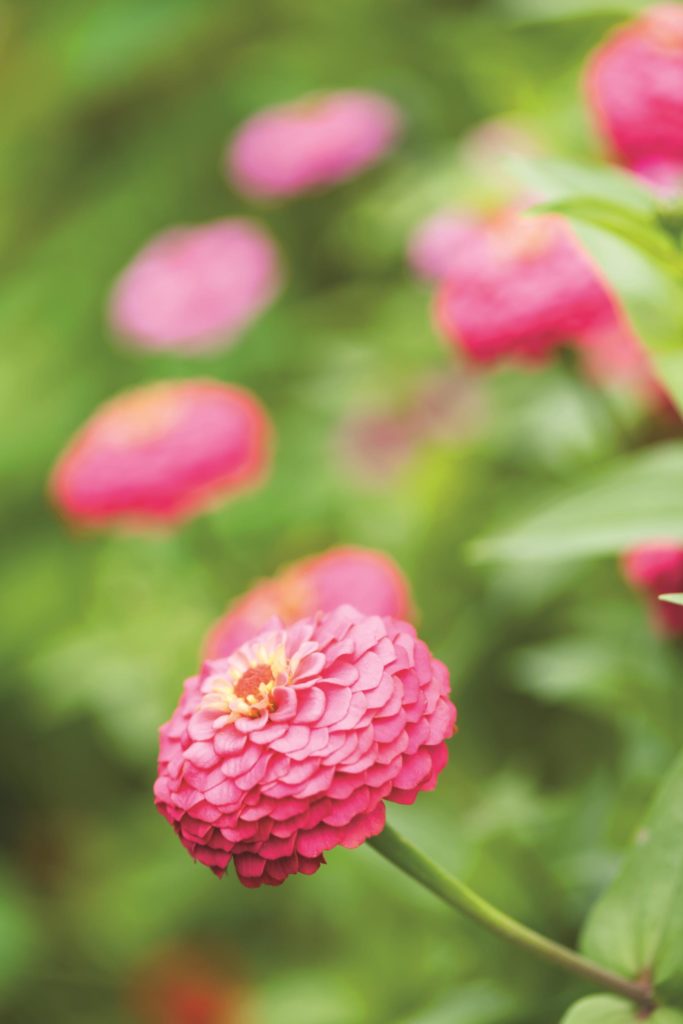
Dahlias do require some work, however, and Sears has become an expert in their cultivation and propagation. “After the first hard frost, I usually let them sit in the ground for a few days until they harden off. Then I cut the plants down to a few inches about the soil. Next, I carefully lift the dahlia out. Some of the tubers are huge.” She then brushes the dirt off and has them sit for a few days. Finally, she stores them in a nest of newspaper, straw, or vermiculite in open boxes. They sit in a cool corner of her basement for the winter. In the spring, the tubers have eyes, which she cuts up accordingly and replants.
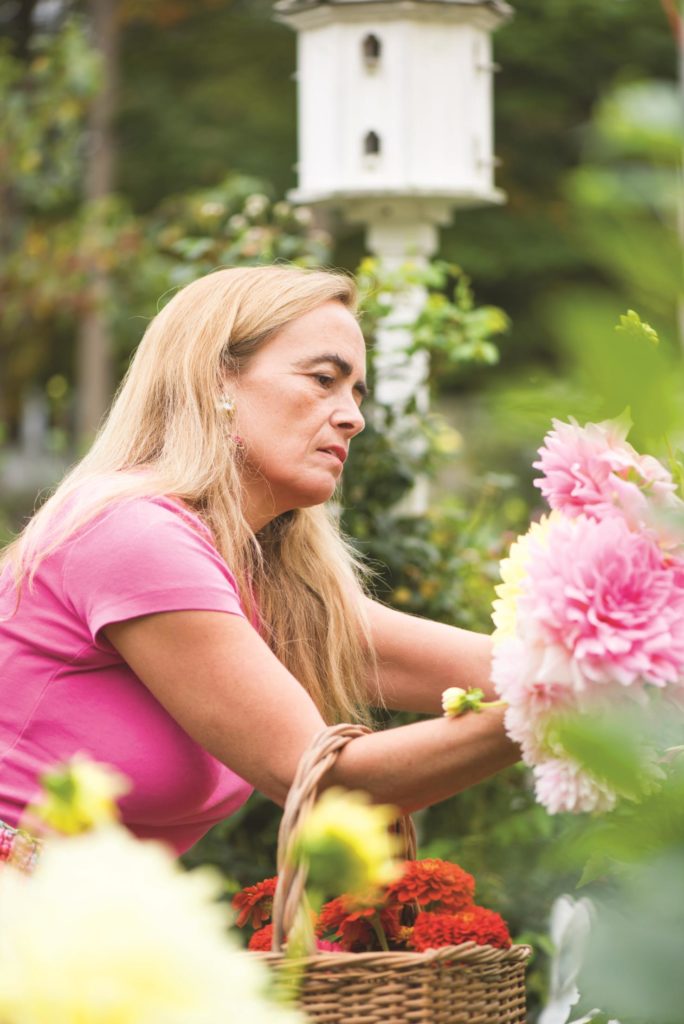
Not to be outdone, other plants also vie for attention in this flamboyant setting. Perky zinnias are ever-present, with adorable bumblebees drinking nectar to their hearts’ content. Roses, too, tumble over the fence in a classic cascade. Sears’s husband, Dan, tends to them. “He has a rosarian in Maine he consults with,” she remarks. Other summer bloomers include black-eyed Susans, snapdragons, and morning glories.
Sears is constantly creating, whether in her garden or her studio. She has built an Instagram fan base by engaging with her followers using the site’s #The100DayProjects to share her garden and art. Two years ago it was 100 posts of fantastic flower arrangements from her garden. This year, who knows? Sears will always find a way to spread her horticultural joy.

